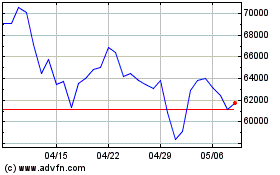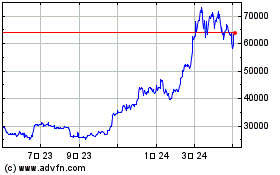Survey Finds Almost 70% Of Ethereum Institutional Investors Engaged In ETH Staking
2024年10月19日 - 10:00AM
NEWSBTC
Almost 70% of institutional investors in Ethereum (ETH) are
participating in ETH staking, with 60.6% of them using third-party
staking platforms. Ethereum Staking Landscape At A Glance According
to a report by Blockworks Research, 69.2% of institutional
investors holding Ethereum are engaged in staking the platform’s
native ETH token. Of these, 78.8% are investment firms and asset
managers. Related Reading: Ethereum Inflation Surge Casts Doubt On
“Ultrasound Money” Claim: Report Notably, slightly more than one
out of five institutional investors – or 22.6% – of the respondents
said that ETH or an ETH-based liquid staking token (LST)
constitutes more than 60% of their total portfolio allocation. The
report notes a seismic transformation in the Ethereum staking
landscape since the network transitioned from a proof-of-work (PoW)
to proof-of-stake (PoS) consensus mechanism during the Merge
upgrade. At present, there are close to 1.1 million on-chain
validators staking 34.8 million ETH on the network. Following the
Merge, Ethereum network participants were allowed to withdraw their
ETH only after the Shapella upgrade in April 2023. After the
initial phase of ETH withdrawals, the network has seen steady
inflows, indicating strong demand for ETH staking. At present,
28.9% of the total ETH supply is staked, making it the network with
the highest dollar value of staked assets, valued at over $115
billion. It’s worth noting that the annualized yield from staking
ETH is around 3%. As more ETH is staked, the yield decreases
proportionally. However, network validators can also earn
additional ETH through priority transaction fees during periods of
high network activity. Third-Party Staking Overshadows Solo Staking
Anyone can participate in ETH staking, either as a solo staker or
by delegating their ETH to a third-party staking platform. While
solo staking gives the staker full control over their ETH, it comes
with a high entry barrier of staking at least 32 ETH – worth more
than $83,000 at current market price of $2,616. Conversely, holders
can stake with as little as 0.1 ETH through third-party stakers but
must give up on some degree of control over their assets. Recently,
Ethereum co-founder Vitalik Buterin stressed the need to lower
entry requirements for ETH solo stakers to ensure greater network
decentralization. Currently, about 18.7% of stakers are solo
stakers. However, the trend shows that solo staking is losing
popularity due to the high entry threshold and the inefficiency of
locked capital. The report explains: Once locked in staking, ETH
can no longer be used for other financial activities throughout the
DeFi ecosystem. This means that one can no longer provide liquidity
to a variety of DeFi primitives, or collateralize one’s ETH to take
out loans against it. This presents an opportunity cost for solo
stakers, who must also account for the dynamic network reward rates
of staked ETH to ensure they are maximizing their risk-adjusted
yield potential. As a result, third-party staking solutions are
becoming more popular among ETH stakers. However, such platforms –
dominated by centralized exchanges and liquid staking protocols –
raise concerns about network centralization. Close to 48.6% of ETH
stakers leveraging third-party staking platforms are using just one
integrated platform such as Coinbase, Binance, Kiln, and
others. The report highlights key factors driving
institutional investors to use third-party platforms, including
platform reputation, supported networks, pricing, ease of
onboarding, competitive costs, and platform expertise. Related
Reading: Bitwise CIO Calls Ethereum The ‘Microsoft Of Blockchains’,
Can ETH Make A Comeback? Although the Ethereum staking ecosystem is
evolving, this growth has not yet been reflected in ETH’s price.
ETH has significantly underperformed against BTC for an extended
period, only recently gaining traction after the US Federal
Reserve’s (Fed) decision to cut interest rates. Nonetheless, some
crypto research firms remain optimistic about ETH’s potential
comeback against BTC later this year. As of press time, ETH is
trading at $2,616, up 0.8% in the past 24 hours. Featured image
from Unsplash, Charts from Blockworks Research and Tradingview.com
Bitcoin (COIN:BTCUSD)
過去 株価チャート
から 9 2024 まで 10 2024

Bitcoin (COIN:BTCUSD)
過去 株価チャート
から 10 2023 まで 10 2024
